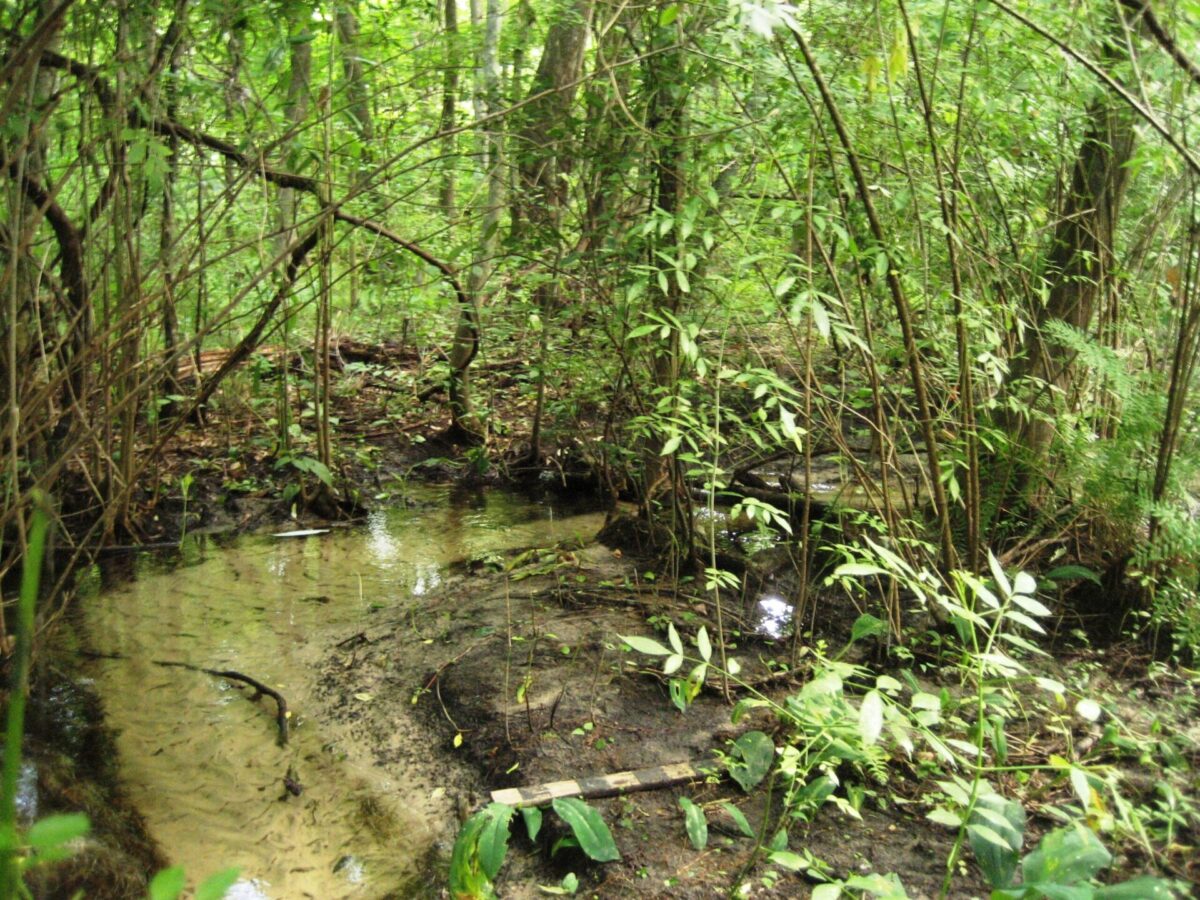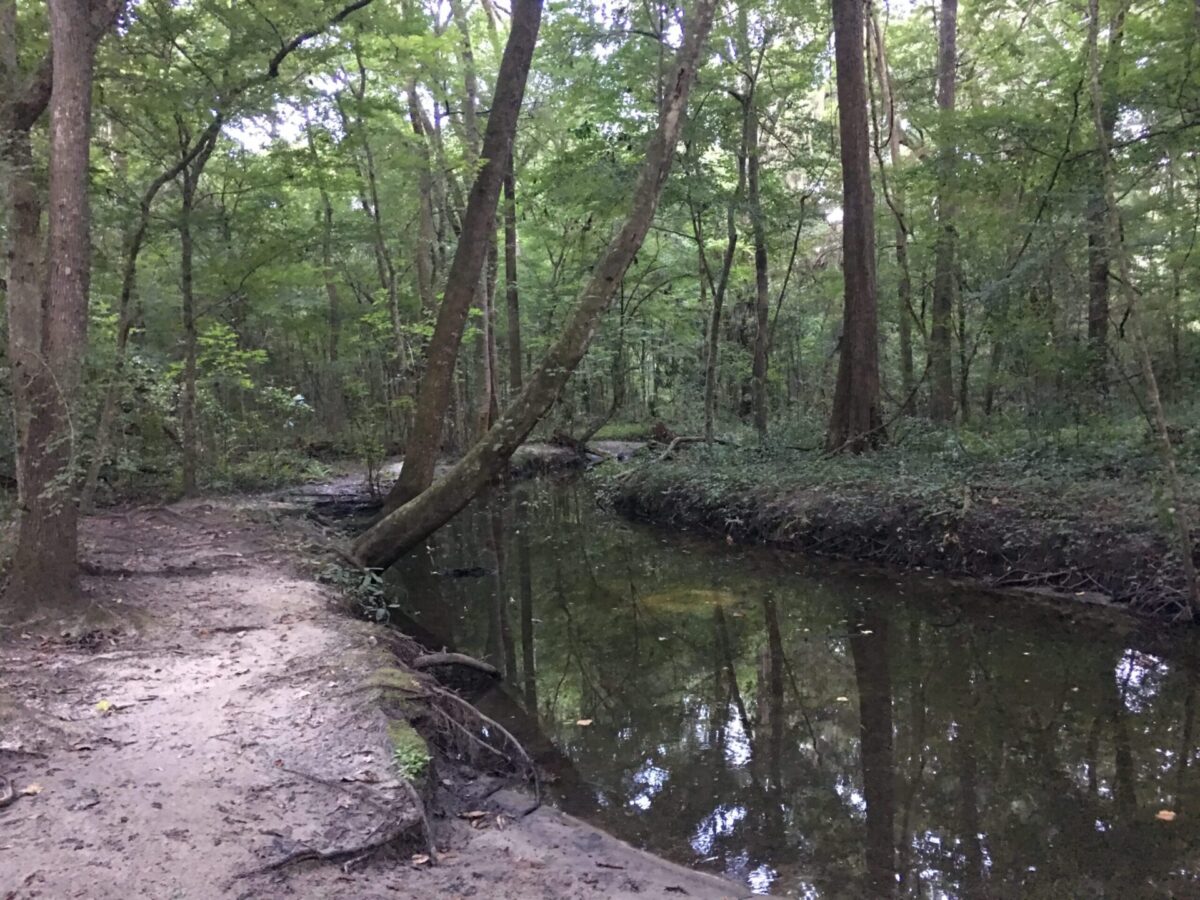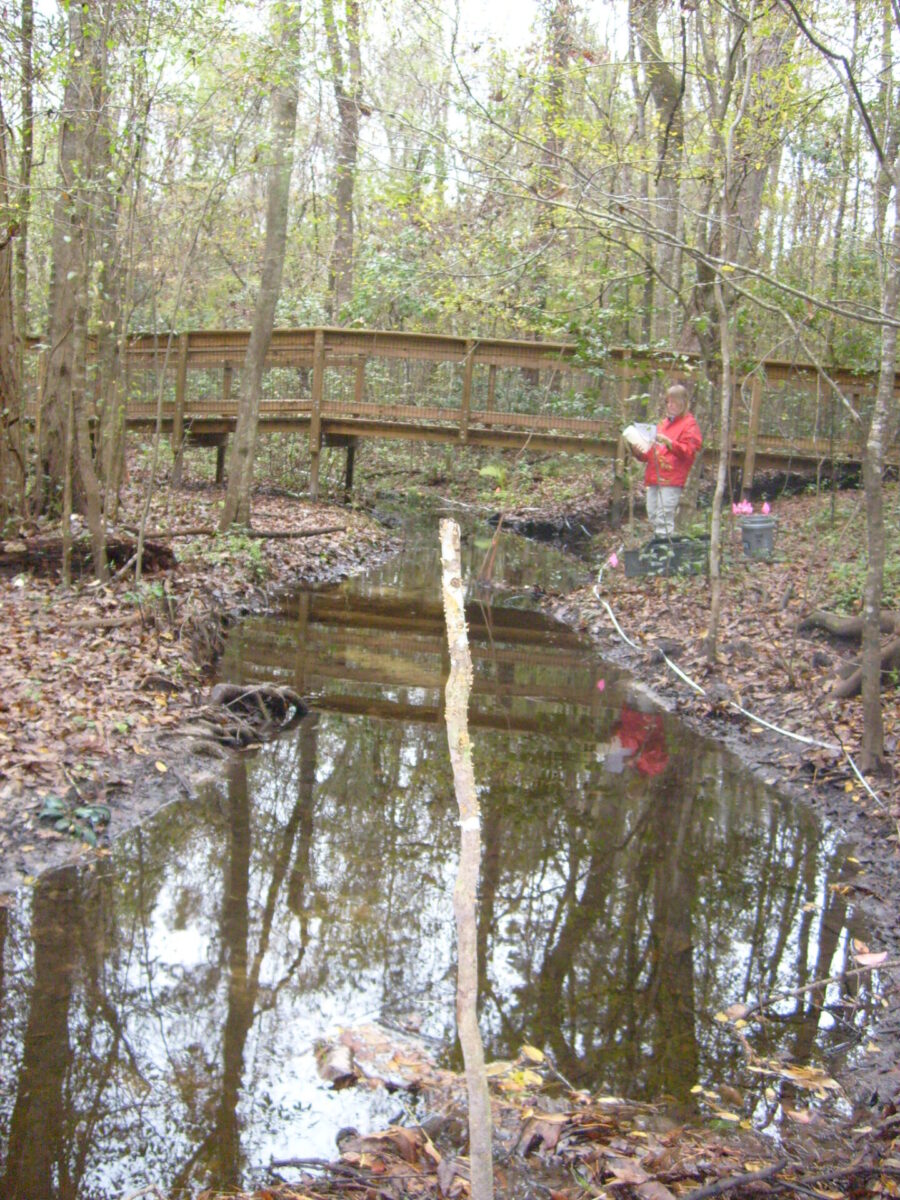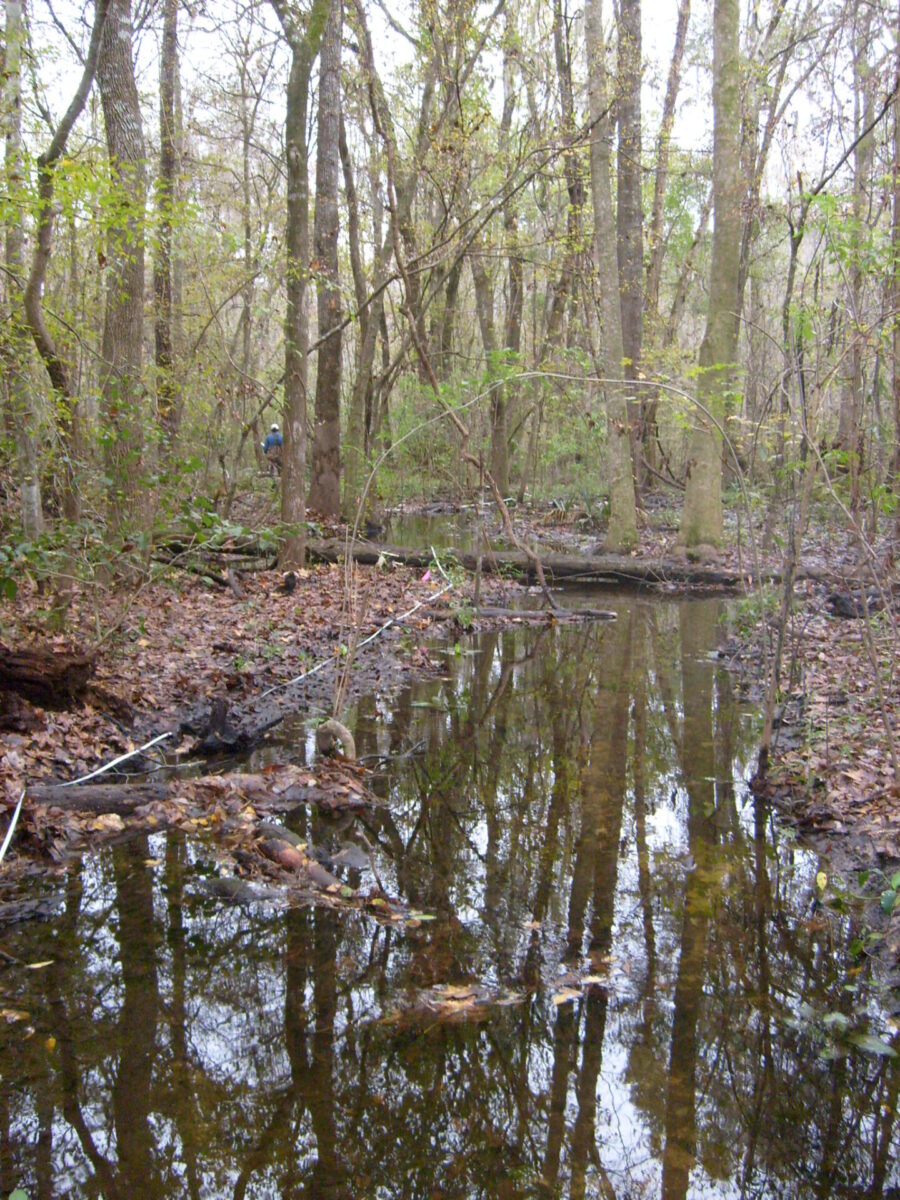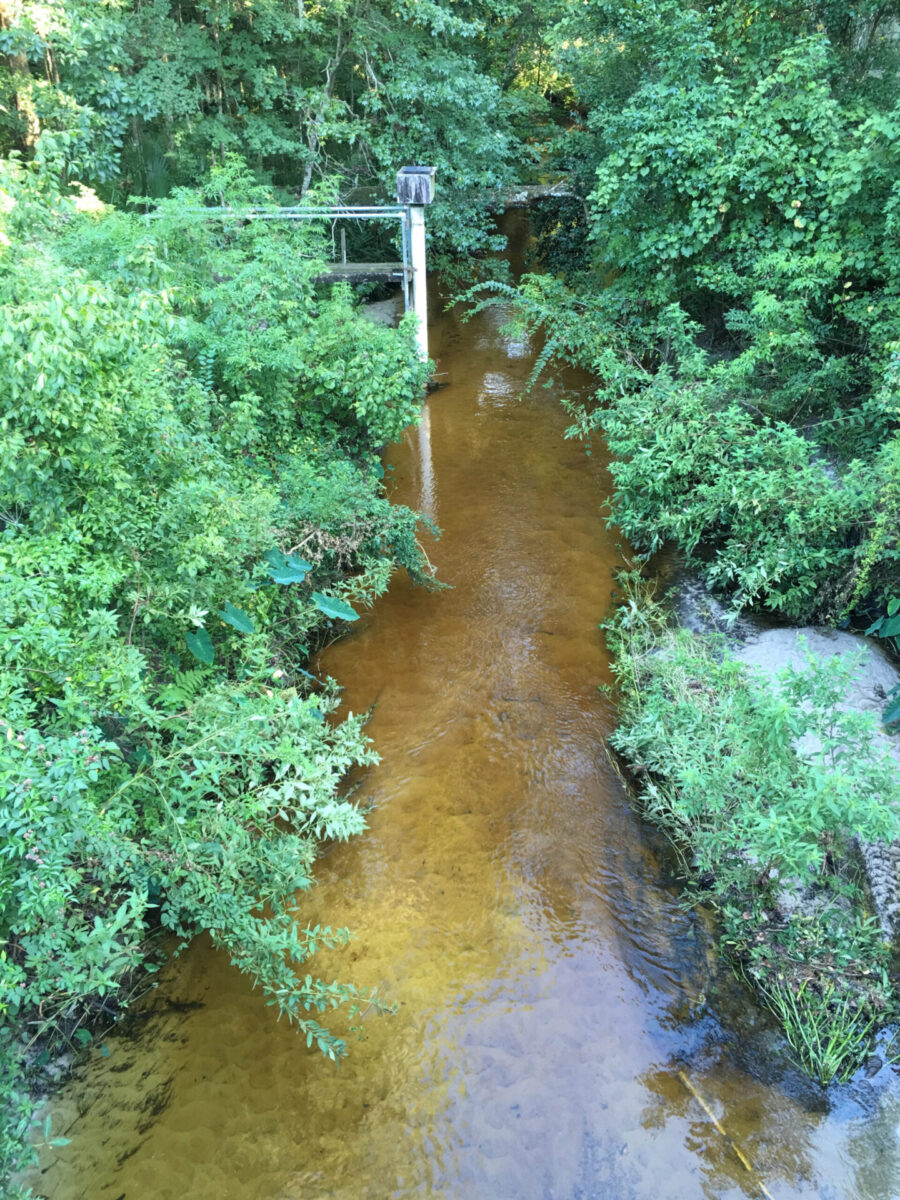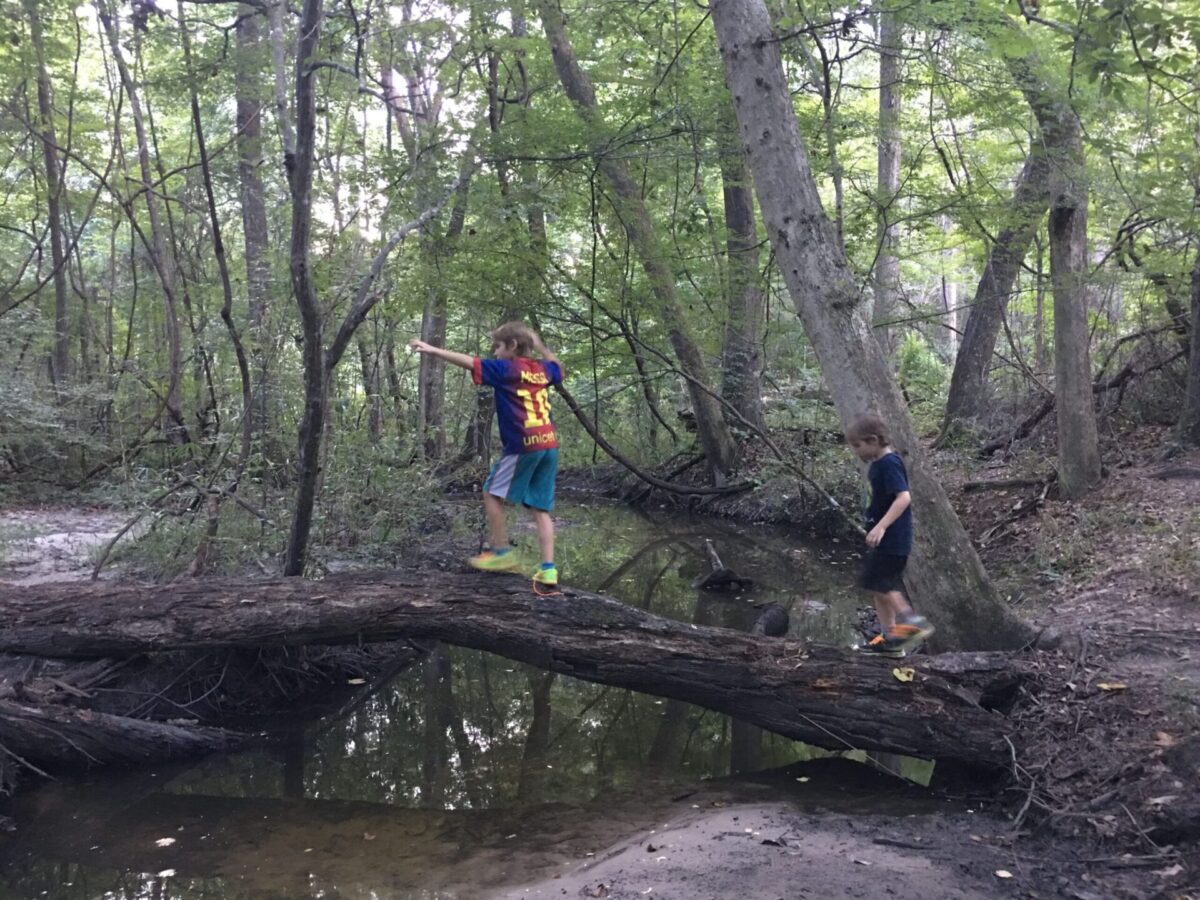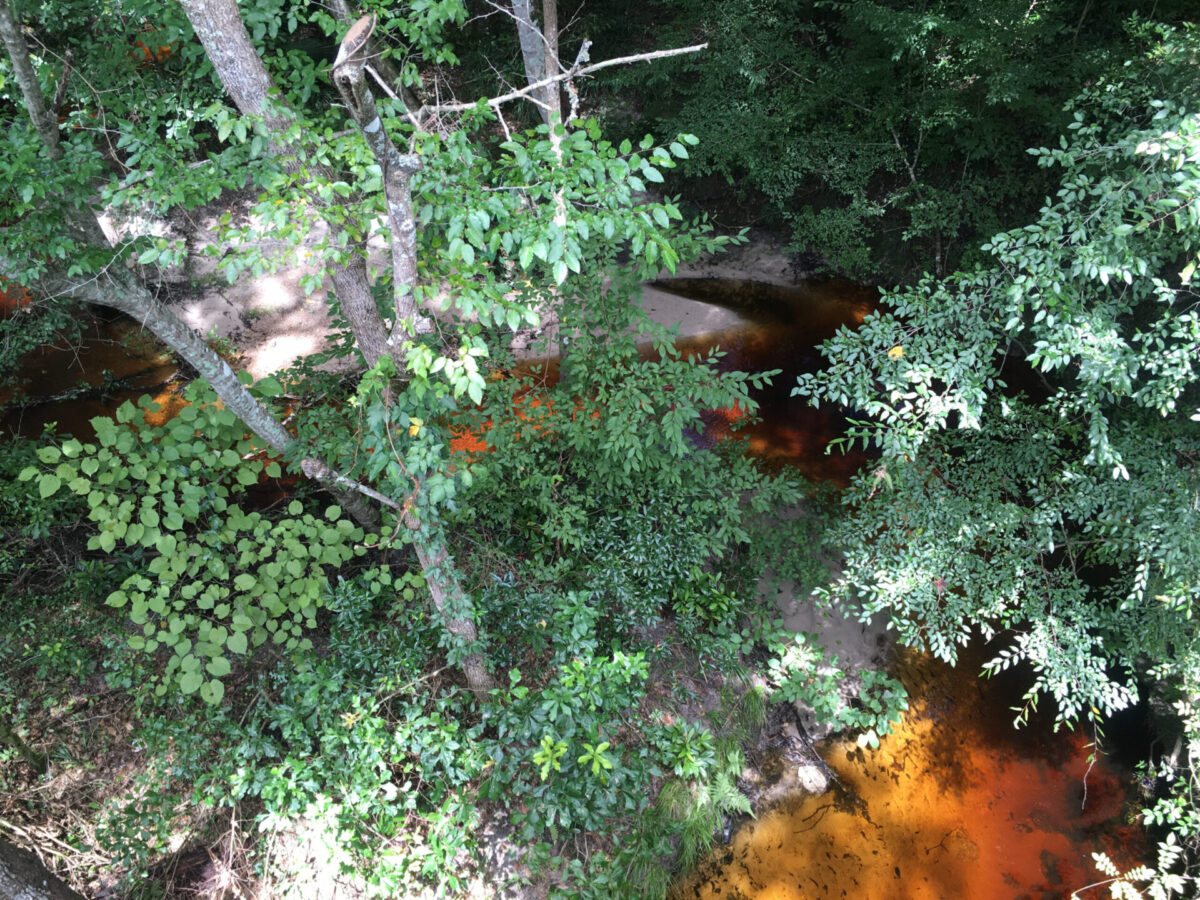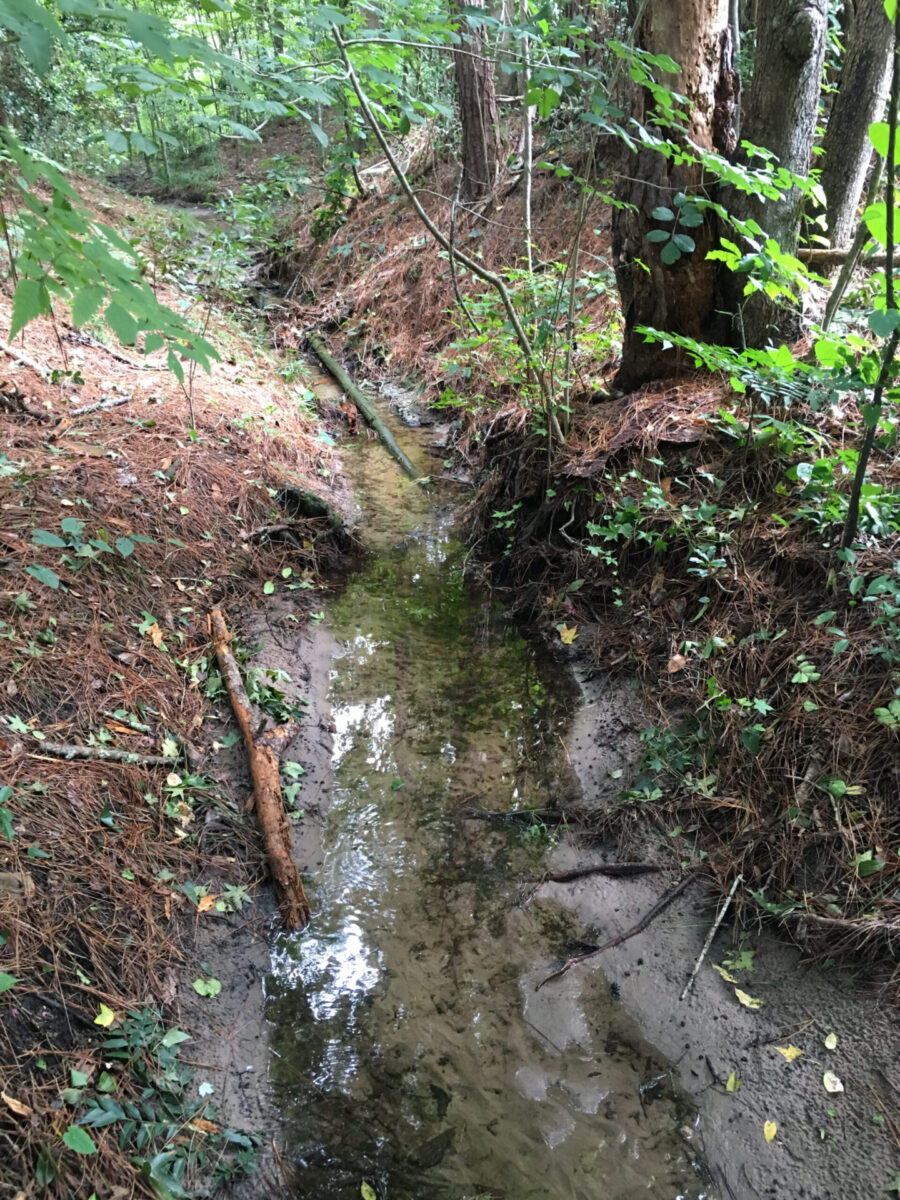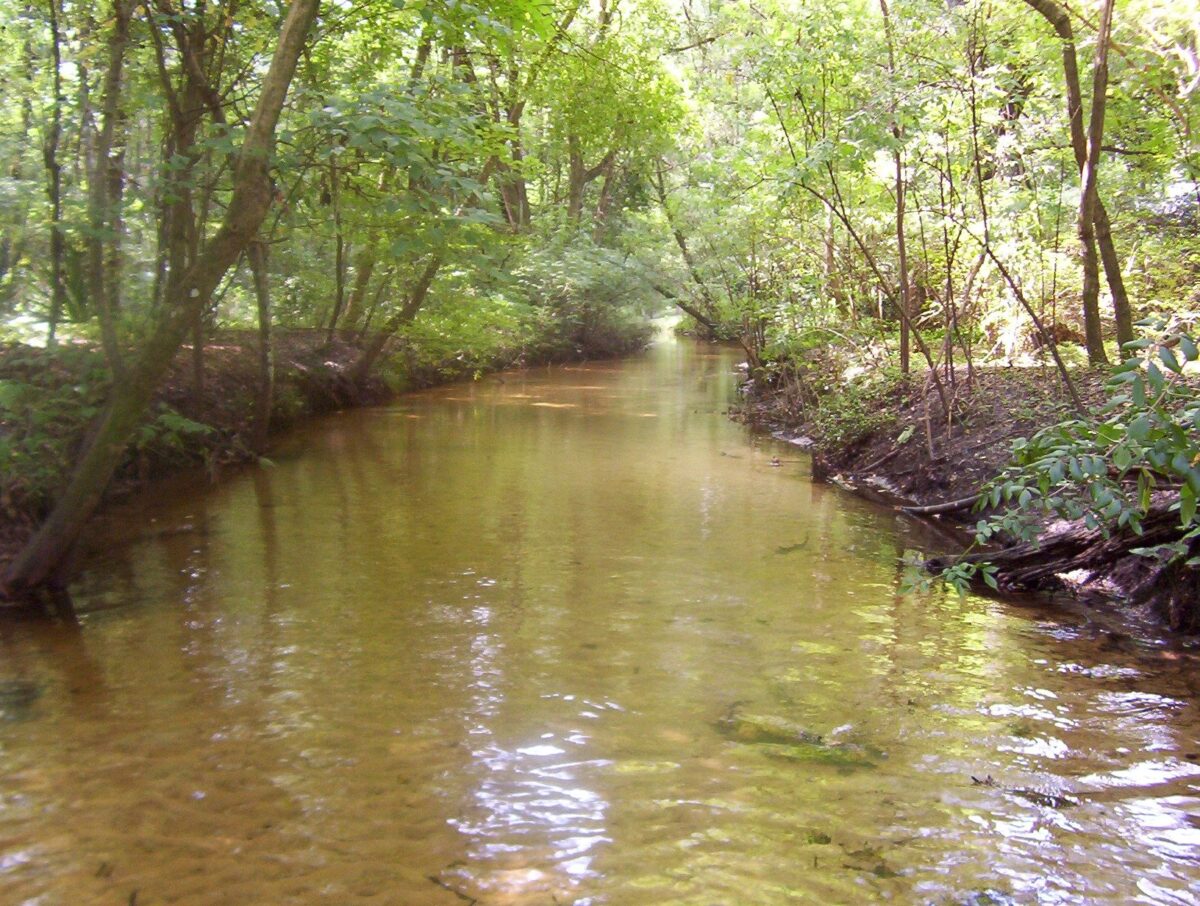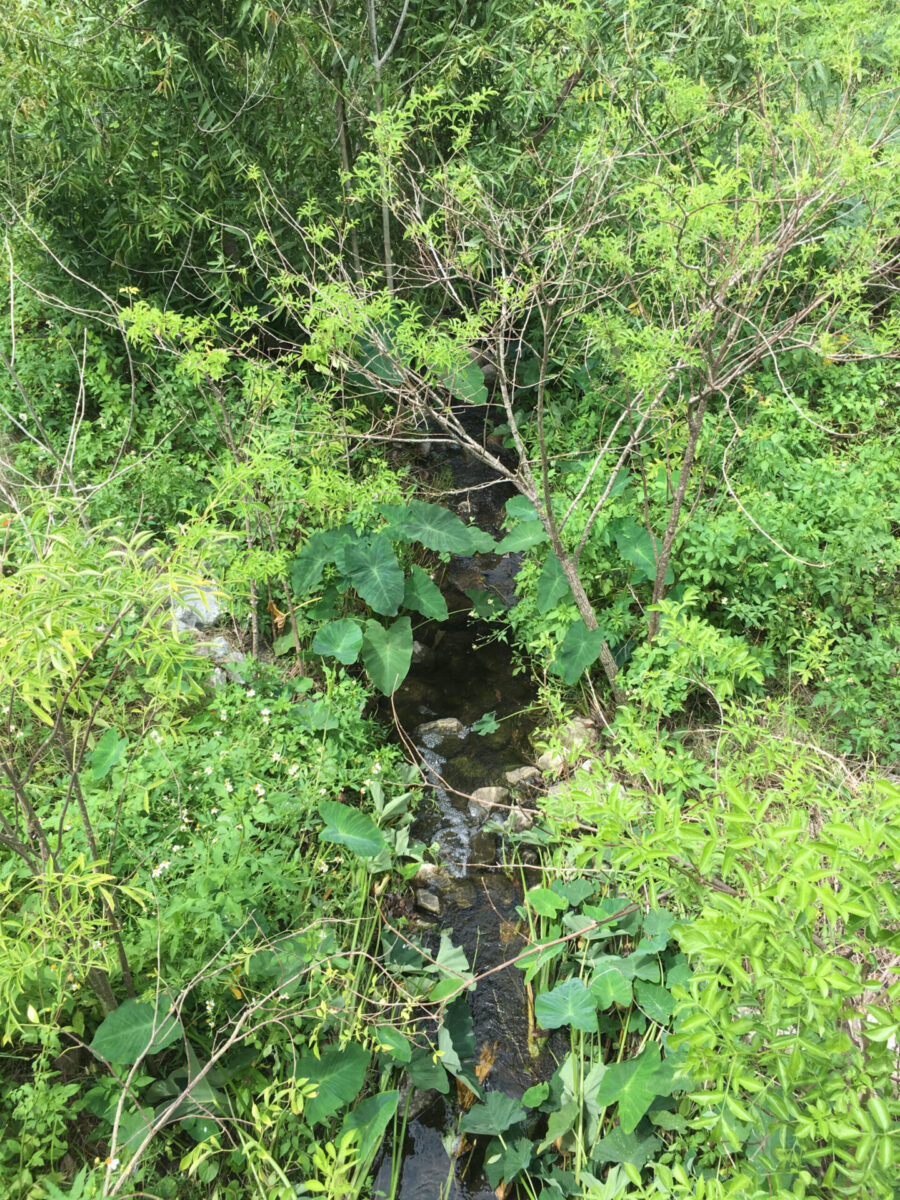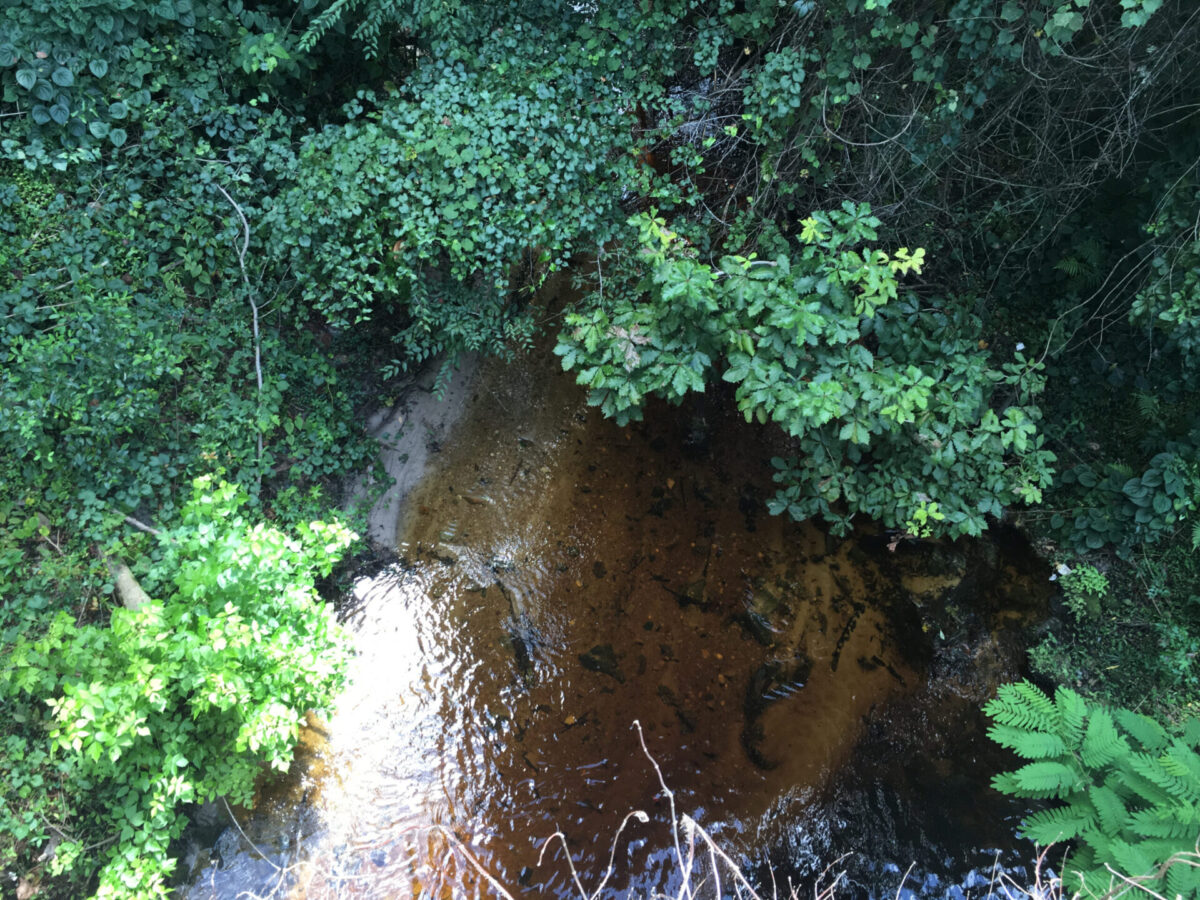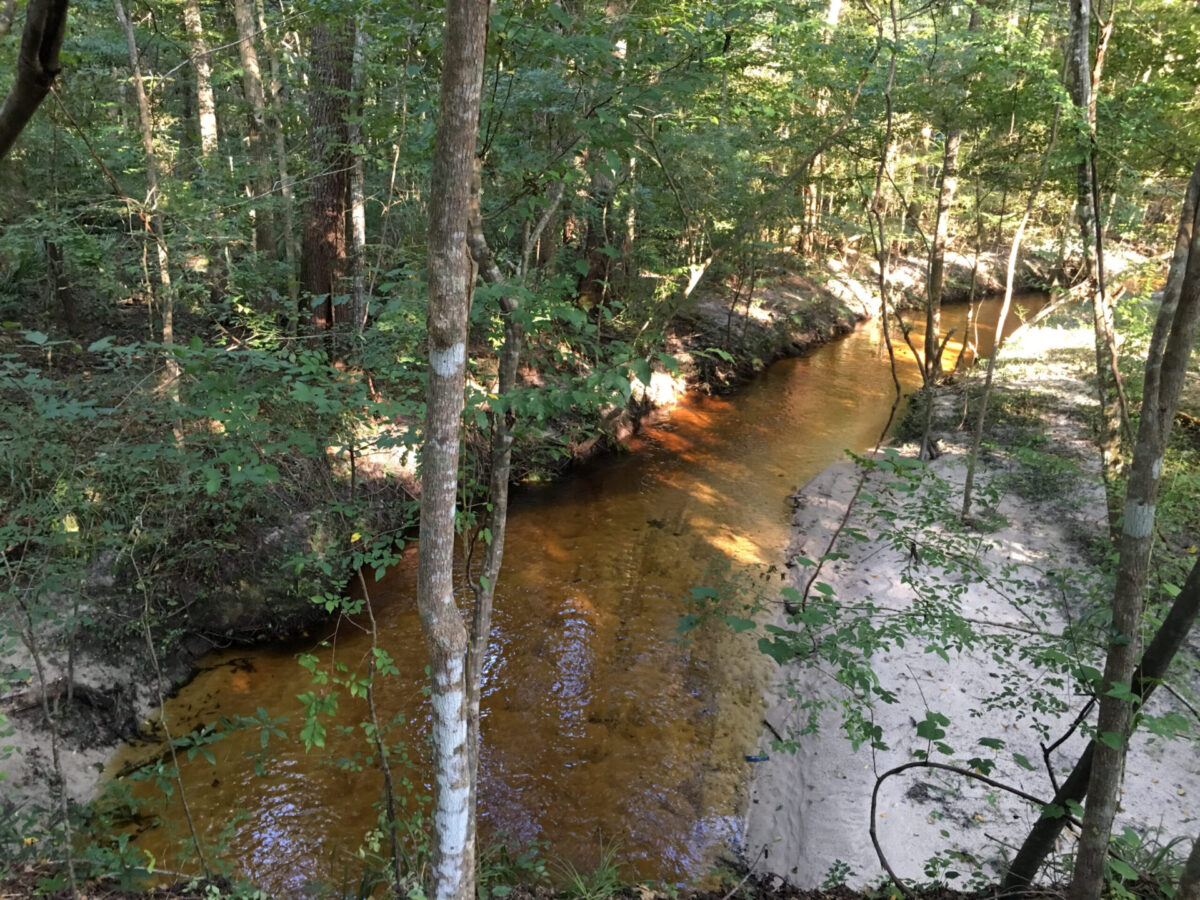Possum Creek
Back
to
Map
Overview
Beautiful Possum Creek is located in the northwest quadrant of the City of Gainesville. The watershed encompasses approximately 8.0 square miles of urban Gainesville and includes the Devil’s Millhopper Geological State Park (State Geological Site). Possum Creek flows from north to south through wetlands, residential neighborhoods, and mixed hardwood hammocks for 6.5 miles before joining Hogtown Creek south of NW 8th Avenue. Possum Creek is the largest tributary to Hogtown Creek, which discharges to the Floridan Aquifer via Haile Sink.
Possum Creek consists of a series of natural streams, seeps, forested wetlands, and dredged channels. Six named tributaries enter Possum Creek between NW 40th Avenue and NW 27th Drive. These tributaries include: Millhopper, Monterey, Pebble, Glen Springs, Three Lakes, and Ridgeview creeks. Residential communities are numerous and make up about 65% of the area of the watershed. These include Rustlewood, Monterey, Hyde Park, Kingswood and Hidden Creek Subdivisions.
Water Quality
While the upper part of the watershed retains much of its natural landscape, the lower part of the watershed is channelized. Sand smothering is a significant problem in some areas of Possum Creek. Possum Creek has healthy habitats in both sites surveyed for biological diversity.
The extensive riparian area, tree canopy, and low density residential development upstream of NW 8th Avenue likely provide sufficient habitat for macroinvertebrates and minimize bank erosion.
Biological surveys of Possum Creek were conducted in 2014. They indicated that the stream had a healthy population of benthic macroinvertebrates with ample habitat. This gave the creek a Health rating on the Stream Condition Index. For more information on water quality, download the Possum Creek Fact Sheet. Additionally, water quality monitoring information and gage data are available for Possum Creek. To access this data, please visit here and access the monitoring stations and data by clicking on the station on the interactive map.
Plan a Visit
Possum Creek Park features mowed recreation fields suitable for ballgames, flying kites, frisbee and other sports. Children of all ages enjoy the playground and the picnic pavilion. A jogging trail encircles the main field and scenic nature trails through the forest and floodplain of Possum Creek provide visitors the opportunity to quietly enjoy the natural world at their own pace.
The Creek can be viewed and enjoyed at the City of Gainesville’s Possum Creek Park, and Hogtown Greenway. Devils Millhopper Geological State Park is in the watershed but not on the creek.
For directions and up-to-date park hours, please visit this Parks, Recreation & Cultural Affairs page.
Did you spot an alligator or another animal at the park? Share your photos with us on Facebook or Twitter.
Did you know?
Plio-Pleistocene combines the time ranges of the Pliocene and Pleistocene epochs. This range goes from roughly 5 million years ago to 12,000 years ago. The Hawthorn Group formation came together during the Late Oligocene to Pliocene epochs roughly 25.512 million years ago.
Fun Facts
• Approximately 90% of Possum Creek flows through urban, low residential and commercial areas of Gainesville.
• The Devil’s Millhopper State Park encompasses 63 acres and is located 2.5 miles northwest of Gainesville off SR 232 (Millhopper Road).
• The main feature of the park, a very large sinkhole referred to as the Devil’s Millhopper, has been a national, natural landmark since the 1880’s. The sinkhole exposes the entire thickness of recent, Plio-Pleistocene, and Hawthorn Group formations along its 120 foot high steep walls.
• As you descend the many flights of steps leading down to the bottom of the sinkhole, you enter a microclimate that is cool and wet and filled with the sound of waterfalls as Deer Run Creek and numerous small surficial and intermediate aquifer springs discharge water into the sink.
• Many plant species uncommon to Gainesville are found within the sinkhole due to this microclimate. The water that pours into the sinkhole drains directly into the Floridan aquifer.
Wildlife
Although Possum Creek and its tributaries are located in an urban setting, most of the development is of low density, and the watershed is able to sustain many diverse species of plant life. The creek corridor is home to many urban animal species such as possum, raccoon and armadillo. In the creek you will see many turtles, fish and birds and even the occasional otter. Alligators too are common in some sections of the creek.
Click the Image to See the Gallery!


